#Peter Farber
Text
Liebe mich!
Ertrage ich das Ende noch einmal? Nehme ich all den Schmerz auf mich?
Ganz egal wie ich mich entscheide, alle Darsteller liefern so eine unfassbar gute Leistung die gesamte Folge über. Da bin ich es ihnen eigentlich auch schuldig bis zum Ende mit dabei zu sein.
#Tatort Dortmund#Tatort: Liebe mich!#Ich liebe sie alle#tatort#german stuff#Martina bönisch#peter farber#rosa herzog#jan pawlak
11 notes
·
View notes
Text
100+ Rock Band Posters and Canvas Prints
Print Option:
♦ Framed Poster Print
♦ Canvas Print
♦ Metal Print
♦ Acrylic Print
♦ Wood Prints
🌐 Worldwide shipping
#pink floyd#Jim Haas#Joe Chemay#Stan Farber#John Joyce#Andy Bown#Peter Wood#Willie Wilson#Clive Brooks#Andy Roberts#Jon Carin#Tim Renwick#Guy Pratt#Gary Wallis#Durga McBroom#Scott Page#Rachel Fury#Margaret Taylor#Lorelei McBroom#Roberta Freeman
3 notes
·
View notes
Text
You're Not Invited to Our Molotov Cocktail Party
Does it make sense to torch military enlistment offices? The short answer is no. And here’s why not.
From the outset of the mobilization in Russia, military enlistment offices have been targeted by arson attacks. We realized that this appears striking and effective and may seem like a good way to voice your protest. But is this really the case? Let’s unpack it.
1. It is ineffective. Most often,…

View On WordPress
#Alexei Gorinov#Alexei Rozhkov#Armen Aramyan#Bogdan Ziza#Combat Organization of Anarcho-Communists (BOAK)#direct action#DOXA (Russian student magazine)#George Losev#Igor Stomakhin#Ilya Farber#Ilya Yashin#Ivan Astashin#military recruitment offices (voenkomat)#Molotov cocktails#Peter Gelderloos#political violence#Russian anti-war movement#Russian invasion of Ukraine#Simon Pirani#Vesna Movement#Vladimir Rumyantsev
0 notes
Video
youtube
Michael Kamen's career had a variety of surprises as we have seen, though I would dare to suggest he did a lot to bridge the classical and the popular with his opus. One of the pinnacles of the approach might be his collaboration with Roger Waters, when the latter did The Wall in Berlin. Yes, he did hold these concerts after the real one there got demolished, so the entire album gained another dimension. Of course, Waters continued to be Waters, which resulted in a rock opera on steroids, because he called many guests to transform the album into whatever he planned. Some cooperators surprise you, though. I mean, Bryan Adams doesn't sound like someone you would put your trust here, yet Waters' hunch proved to be correct, since the Canadian rocker presented a rarely shown side of his.
#Roger Waters#the wall - live in berlin#empty spaces#jim farber#jim haas#joe chemay#john joyce#graham broad#rick difonzo#snowy white#andy fairweather-low#nick glennie smith#peter wood#bryan adams#the east berlin radio choir#dietrich kohne#hans deiter baum#the rundfunk orchestra#michael kamen#nick griffiths#90's music#art rock#live version
0 notes
Text






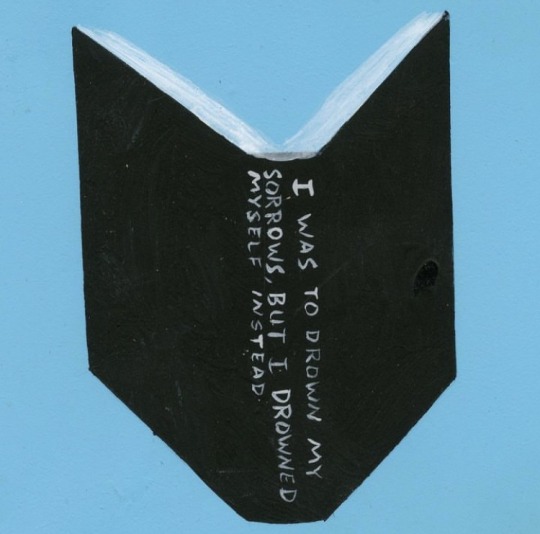



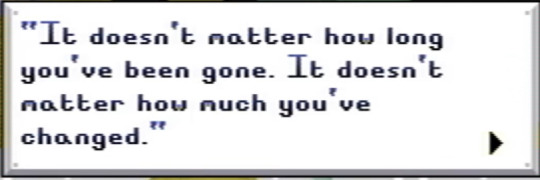

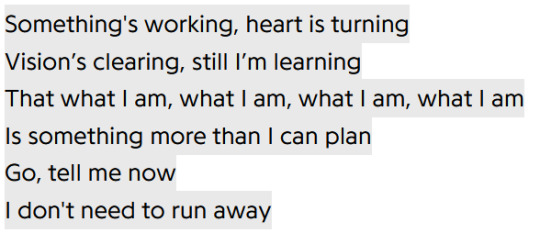



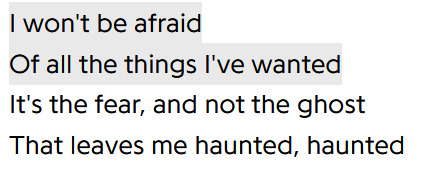


william wisp & dying: how to stop haunting your own life
and then is heard no more, mili / the hero, john unterecker / untitled, michael dumontier & neil farber / not the ghost, the crane wives / crime and punishment, fyodor dostoyevsky / untitled, michael dumontier & neil farber / untitled, michael dumontier & neil farber / nine, sleeping at last / untitled, michael dumontier & neil farber / petscop, tommy domenico / untitled, sean scully / runaway, half alive / waiting, marya hornbacher / punta animas, peter alexander / untitled, michael dumontier & neil farber / soft, kiana azizian
#THIS WEBWEAVE HAS BEEN STUCK IN DEVELOPMENTAL HELL SINCE THE S2 FINALE.#so i'm very glad to release it unto the world#jrwi#jrwi prime defenders#jrwi pd
64 notes
·
View notes
Text
Holiday Gifting Day 3
Day 3 of 5 features some Tanz der Vampire audios with Steve Barton as our lovely Count!
Steve Barton (Graf von Krolock), Cornelia Zenz (Sarah Chagal), Aris Sas (Alfred), Gernot Kranner (Professor Abronsius), Eva Maria Marold (Magda), James Sbano (Yone Chagal), Anne Welte (Rebecca Chagal), Nik Breidenbach (Herbert von Krolock), Torsten Flach (Koukol) October, 1997; Vienna || Notes: 'Uncut' version. From early in the show's run before any cuts were made.
Link
Steve Barton (Graf von Krolock), Lyn Liechty (alt Sarah Chagal), Aris Sas (Alfred), Gernot Kranner (Professor Abronsius), Eva Maria Marold (Magda), James Sbano (Yone Chagal), Anne Welte (Rebecca Chagal), Harald Tauber (Herbert von Krolock) 1998; Vienna Soundboard audio
Link
Steve Barton (Graf von Krolock), Marleen van der Loo (alt Sarah Chagal), Alex Melcher (alt Alfred), Gernot Kranner (Professor Abronsius), Jens Janke (Yone Chagal) September 20, 1998; Vienna Highlights
Link
Steve Barton (Graf von Krolock), Misha Kovar (alt Sarah Chagal), Alex Melcher (alt Alfred), Jens Janke (Professor Abronsius), Eva Maria Marold (Magda), Peter Farber (Yone Chagal), Harald Tauber (u/s Herbert von Krolock) January 16, 1999; Vienna
Link
Steve Barton (Graf von Krolock), Cornelia Zenz (Sarah Chagal), Alex Melcher (alt Alfred), Jens Janke (Professor Abronsius), Eva Maria Marold (Magda), Peter Farber (Yone Chagal), Harald Tauber (u/s Herbert von Krolock) January 17, 1999; Vienna || Notes: Final show for Alex Melcher and Steve Barton
Link
14 notes
·
View notes
Text
Jan312024
Now Harvard DEI Chief Accused of Plagiarism
In case anyone thought plagiarist, former Harvard President, and ludicrous moonbat Claudine Gay was an exception to the rule, it appears Harvard’s chief diversity and inclusion officer is also a plagiarist:
Sherri Ann Charleston, appears to have plagiarized extensively in her academic work, lifting large portions of text without quotation marks and even taking credit for a study done by another scholar—her own husband—according to a complaint filed with the university on Monday and a Washington Free Beacon analysis.
The complaint makes 40 allegations of plagiarism that span the entirety of Charleston’s thin publication record.
You can’t expect better than Claudine Gay with Affirmative Action hires in charge of hiring:
Charleston was the chief affirmative action officer at the University of Wisconsin-Madison before she joined Harvard in August 2020 as its first-ever chief diversity officer. In that capacity, Charleston served on the staff advisory committee that helped guide the university’s presidential search process that resulted in the selection of former Harvard president Claudine Gay in December 2022, according to the Harvard Crimson.
Head of the National Association of Scholars Peter Wood characterizes Charleston’s scholarship as “research fraud pure and simple.” But you can’t say she hasn’t been doing her job, which is to institutionalize hatred of whites:
Since 2020, her office has pumped out a stream of materials that bemoan the “weaponization of whiteness,” discuss the ins and outs of “white fragility,” and urge students to “call out” their peers for “harmful words.”
“Harmful words” can be presumed to mean speech that does not comply with leftist doctrine grounded in DEI and Critical Race Theory.
Harvard’s commitment to this toxic dogma at the expense of integrity and competence is producing consequences:
The Dana-Farber Cancer Institute, one of Harvard Medical School’s three teaching hospitals, announced in January that it would retract six papers and correct dozens more after some of its top executives were accused of data manipulation. That news came on the heels of a viral essay in which Carole Hooven, a Harvard biologist, described how she had been hounded out of a teaching role by her department’s diversity committee after she said in an interview that there are only two sexes.
Serious medical research cannot be conducted where facts are forbidden in the name of politics.
The school is also facing an ongoing congressional probe over its handling of anti-Semitism and its response to the plagiarism allegations against Gay, which Harvard initially sought to suppress with legal saber-rattling.
Harvard has an endowment of $51 billion, but its most valuable asset has been its reputation for excellence. This reputation has been exchanged for laughing stock status in the name of moonbattery.
On tips from Ed McAninch, Steve D, and Mr. Freemarket.


At 60 years old I decided to get a degree. I never finished high school and getting a formal education was always on my bucket list. After helping all four of my kids get their BAs it seemed only fair that I get one of my own.
I was surprised to find that African Americans had their own separate degree plan within the UT university structure. They had separate study areas, separate dining rooms, separate fraternal organizations and degree requirements custom made to insure they passed all their core requirements with a 3.7 average. there was a list of professors guaranteed to pass them with a 3.7 average for doing virtually no written course work. All they had to do was show up for 50 percent of the lecture. If you check "Rate My Professor" on the internet you will see that there are buzz words used to let a potential student know how little would get them a passing grade.
In the case of these professors simply ask yourself how they would have been treated had they been white or Asian? They would have been relieved of their duties and sent packing. No doubt about it. There were of course exceptions but the system was designed to grease the skids for minority students.
4 notes
·
View notes
Note
hey brian, I was wondering if you had any recommendations on film criticism/theory/reviews. are there any critics/thinkers you deeply admire that write well and have challenged your ways of seeing/thinking that you believe would help in better appreciating the medium?
i probably could have gone much longer on this five years ago but my brain did some sort of system reboot and lost all the memories ive had consuming film reviews, criticism, etc this ask makes me want to dust off that book i have of pauline kael capsules on my shelf lol anyways here's list of some fav critics/people to seek out if ur eager to dig deeper into cinephilia:
my most favs
ignatiy vishnevetsky (my fav)
jonathan rosenbaum
filipe furtado
dave kehr
david bordwell
j. hoberman
dennis lim
kim morgan
neil bahadur
nick pinkerton
xxx
james agee
miriam bale
richard brody
k. austin collins
fernando f. croce
manhola dargis
bilge ebri
manny farber
sean gilman
molly haskel
kent jones
pauline kael
peter labuza
matt lynch
adrian martin
calum marsh
adam nayman
nick newman
tony rayns
vadim rizov
jonathan romney
dan salitt
andrew sarris
scout tafoya
armond white
robin wood
ppl on letterboxd who's musings i enjoy
jake cole
max coombes
ryland walker knight
john lehtonen
willow maclay
luke mccarthy
matt mccracken
diogo serafim
arthur tuoto
ethan vestby
kurt walker
*also, i do like ebert but as i get older i realize i enjoy other lesser known critics a bit more+his taste in the latter years (21st century) is kinda wack tbh. 2007, one of the consensus last great years of american cinema, his best of the year was juno (i know, i know, it's an opinion but still lol) . cannot say he wasn't a formative figure, him being the most well known, most accessible film critic, and did the thing the best critics do in elevating, shedding light on artists they believe feel deserved of recognition/putting more eyes on their work.
**i think there's more people i could name-drop but i havent read enough, or been exposed to them as frequently, to go all-in on an endorsement of them/their work
25 notes
·
View notes
Text
(027) Die drei ??? und der magische Kreis

Klappentext
In Santa Monica geschehen an einem Abend gleich zwei folgenschwere Ereignisse auf einmal: Ein Verlag geht in Flammen auf und im benachbarten Filmlabor werden sämtliche Filme der bekannten Schauspielerin Madeline Bainbridge gestohlen. Als dann auch noch das Manuskript der Memoiren Madeline Bainbridges verschwindet, ist den drei ???, Justus, Peter und Bob, klar, dass hier etwas nicht mit rechten Dingen zugeht. Die Nachforschungen, die sie anstellen, führen die drei Detektive in das unheimliche Reich der Magie. Alles erscheint undurchschaubar. Was bedeutet der magische Kreis, in dem die Zahl 13 eine so große Rolle spielt? Was verbirgt sich hinter Madeline Bainbridges rätselhafter Vergangenheit und was ist wahr an der Behauptung, sie sei eine Hexe? Gibt es den Mord durch Magie? Diese Frage gilt es für die drei zu lösen. bei ihren Ermittlungsarbeiten sind die unheimlichsten Situationen zu überstehen und Peter kommt nach einer entscheidenden Entdeckung in große Gefahr ...
Veröffentlichungshistorie
Buch (Random House): 027, 1978, M. V. Carey, The Mystery of the Magic Circle
Buch (Kosmos): 027, 1981, Leonore Puschert (aus dem Amerikanischen übertragen)
Hörspiel (Europa): 027, 1981
⁉️ Allgemein
Handlungsort
Santa Monica
Kategorie
Betrug
Figuren
Justus Jonas
Peter Shaw
Bob Andrews
Horace "Beefy" Tremayne, Inhaber von Amigos Press
William Tremayne, Onkel von Beefy
Marvin Grey, ehem. Chauffeur und jetzt Manager von Madeline Bainbridge (😈)
Mr. Grean
Madeline Bainbridge, Schauspielerin
Jefferson Long, Kriminalreporter und ehemaliger Schauspieler (😈)
Schrottplatzangestellter
Harold Thomas / Charles "Charlie" Goodfellow, Schauspieler (😈)
Clara Addams, Angestellte von Mrs. Bainbridge
🏖 Rocky Beach Universum
Orte
Santa Monica
Einrichtungen
Amigos Press, Verlag in Santa Monica
Film Craft Laboratory, Filmlabor in Santa Monica
Schrottplatz, in der Thornville Avenue, zwei Blocks südlich vom Woolshire Boulevard
Java, indonesisches Restaurant in der Nähe des Verlags
Sonstiges
Madeline Bainbridge, Schauspielerin, lebt ein Einsiedlerleben, Filme und Serien werden nicht mehr gezeigt und alle Negative wurden aufgekauft.
Ramon Desparto, war mit Madeline Bainbridge verlobt, verunglückte aber in einem Autounfall während dem Dreh von "Es geschah in Salem".
Elliot Farber, Schauspieler und gehörte zum magischem Kreis von Mrs. Bainbridge
Laureen Hazel, Schauspielerin und gehörte zum magischem Kreis von Mrs. Bainbridge
Estelle du Barry, Schauspielerin und gehörte zum magischem Kreis von Mrs. Bainbridge
Mrs. Paulson, Schauspieler und gehörte zum magischem Kreis von Mrs. Bainbridge
🛼 Sonstiges
Lustige Dialoge
Peter: "Los doch, Wasser marsch!"
*Zur Feuerwehr, die DRAUSSEN vor dem Haus steht*
Peter: "Oh man du spinnst ja! Mit Hexen sollen wir uns einlassen?! Wann geht's los?"
Madeline Bainbridge: "Was hätten wir denn tun sollen?"
Marvin Grey: "Töten! Sie über einen Steilhang werfen!"
Madeline Bainbridge: "Marvin!"
Marvin Grey: "Ich mag keine neugierigen Kinder."
Bob: "Beefy, vorsicht! Fall nicht!"
Beefy: "Argh, ugh, uff, aua, urgh ah ... zu spät."
Justus: "Zu spät, der Vogel ist ausgeflogen."
Beefy: "Stimmt, er ist ausgezogen."
Phrasenschwein
-
🏳️🌈 Queer/diversity read
Shippy moments
-
Diversity, Political Correctness and Feminism
Schrottplatzangestellter: "Und außerdem schlage ich keine Kinder."
#die drei fragezeichen#die drei ???#und der magische kreis#folge 027#027#M. V. Carey#not kansas anymore#santa monica#betrug
10 notes
·
View notes
Text
Meet the Amatruda Lab!
James Amatruda, MD, PhD

www.chla.org
Dr. James Amatruda is the Head of Basic and Translational Research for the Cancer and Blood Disease Institute at Children’s Hospital Los Angeles. He’s the inaugural holder of the Dr. Kenneth O. Williams Chair in Cancer Research. Dr. Amatruda is a Professor of Pediatrics and Medicine for the Keck School of Medicine of USC. He attends on the Solid Tumor oncology service at CHLA.
Dr. Amatruda received his MD and PhD from Washington University School of Medicine. He completed his internship and residency in Internal Medicine from Brigham and Women’s Hospital. He was a Visiting Fellow at the Institute of Cell Biology in Consiglio Nazionale delle Ricerche in Rome and completed his Medical Oncology fellowship at Dana-Farber/Partners Cancer Care in Boston, Massachusetts.
When not in the lab, Dr. Amatruda enjoys running, reading, music-making and exploring around Los Angeles.
Ashley Jean, MD

www.chla.org
Dr. Ashley Jean is a Clinical Fellow in the Amatruda Lab. Dr. Jean graduated from Tufts Medical School in Boston and completed her Pediatric Residency at Maine Medical Center. Dr. Jean started her Pediatric Fellowship at Children’s Hospital Los Angeles in 2019.
Her research focuses on pediatric Ewing Sarcoma. She is currently studying the TAK1 pathway in the tumor genesis of this condition.
Dr. Jean likes to spend her free time outdoors. She enjoys activities such as hiking, paddle boarding and snowboarding.
Christopher Kuo, MD

www.chla.org
Dr. Christopher Kuo is a Clinical Fellow in the Amatruda Lab. Dr. Kuo received his Medical Degree from Rush University and completed his Pediatric Residency from Children’s Hospital Los Angeles. Dr. Kuo started his Pediatric Fellowship at Children’s Hospital Los Angeles in 2020.
His research interest is in osteosarcoma. He is currently working on a project that involves the investigation of the tumor microenvironment of Ewing sarcoma.
Dr. Kuo’s hobbies include breakdancing, swimming and going to coffee shops.
Adam Marentes, MSc., PhD Candidate

www.chla.org
Adam Marentes is a Graduate Student Researcher in the Amatruda Lab. Adam received his Bachelor of Science in Neuroscience from the University of California, Riverside. He then completed his Master of Science from California Polytechnic University Pomona. Adam is currently attending University of Southern California Keck School of Medicine to earn his PhD in Cancer Biology and Genomics.
Adam’s research focus is in mitochondrial DNA variants in Ewing Sarcoma. He is currently working on a collaboration that involves editing mitochondrial DNA in cancer cell lines in zebrafish.
Adam enjoys baking, playing video games with his fiancé and catching a show at the local comedy club.
Tanya Mosesian, MHA

www.chla.org
Tanya Mosesian received her Bachelor of Science in Public Health from California State University of Northridge. She then completed her Master of Health Administration at the University of Southern California.
Tanya is Project Associate for the Amatruda Lab. She provides on-site support for all administrative matters and project facilitation.
Tanya enjoys spending time with her family and friends. She likes to play tennis and hike during the weekends.
Elena Vasileva, PhD, MSc.
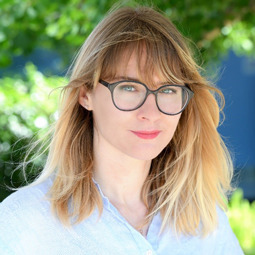
www.chla.org
Dr. Elena Vasileva is a post-doctoral fellow in the Amatruda Lab. Dr. Vasileva received her Bachelor of Science and Master of Science from Peter the Great St. Petersburg Polytechnic University in Applied Mathematics and Physics. She received her PhD in Molecular Biology from the Institute of Cytology, Russian Academy of Sciences.
Dr. Vasileva is interested in studying the molecular mechanisms of cancer development and progression. She has developed an inducible zebrafish model of EWS-FLI driven Ewing Sarcoma as a platform for biologic discovery and preclinical testing of novel therapies.
Dr. Vasileva enjoys running and hiking in Los Angeles.
Mona Wu, PhD
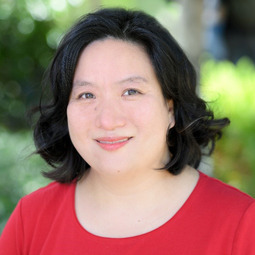
www.chla.org
Dr. Mona Wu is a post-doctoral fellow in the Amatruda Lab. Dr. Wu received her Bachelor of Science from the University of British Columbia, a Master of Science from Université de Montréal, and a PhD from McGill University.
Dr. Wu is interested in understanding the cell of origin for pediatric neoplasms because she believes that this knowledge could lead to better early biomarkers and more effective treatment. She is particularly interested in understanding how aberrant ncRNA (especially miRNAs) may play a role in pediatric disease.
Dr. Wu likes reading and visiting different libraries. She enjoys “foodie-related” activities including trying restaurants, cooking, baking and watching (far too many) cooking shows.
5 notes
·
View notes
Video
The Essentials Shirt with Peter Pan Collar - Blue Dawn _ M by Claire Farber
3 notes
·
View notes
Text

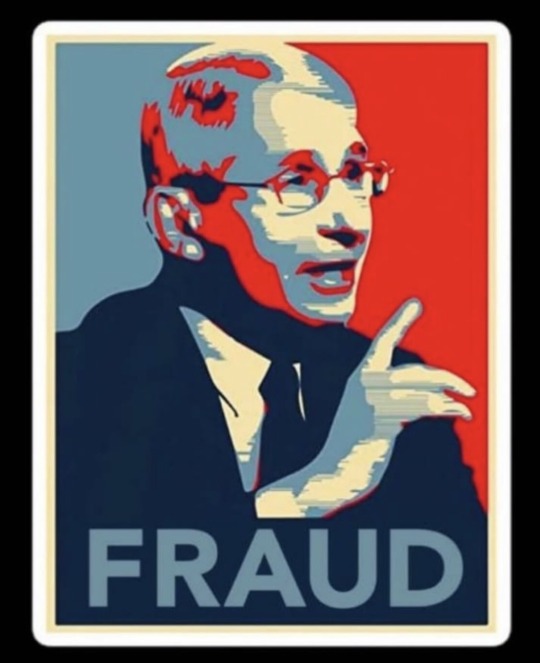

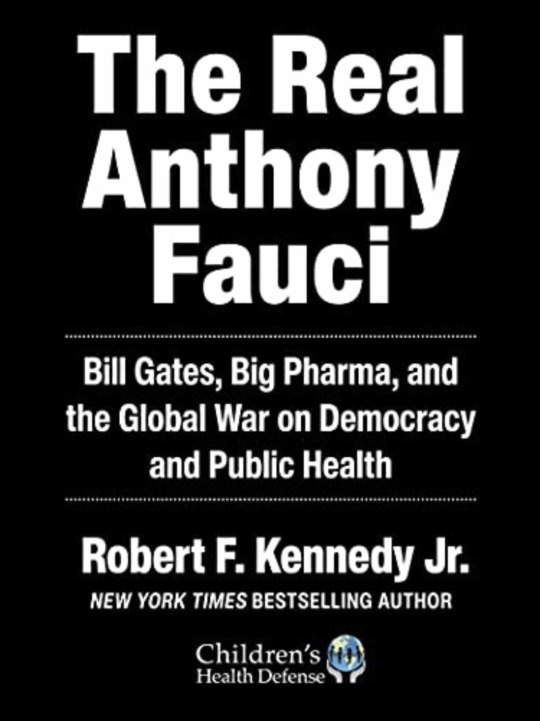
(Question posée par Robert F. Kennedy Jr à Celia Farber):
— Les gens connaissent le concept d’Arendt de la «banalité du mal». Vous vous êtes fixé la formidable tâche de le démystifier [Fauci]. Pourquoi est-il «nuisible»? (Car il l’est effectivement.)
— Ce n’est pas parce qu’il est si «banal», si bureaucratique, si ennuyeux. C’est parce qu’il avance masqué.
En fait, c’est un révolutionnaire — un révolutionnaire très dangereux, qui s’est glissé derrière les grilles au moment où personne ne comprenait ce qu’il introduisait avec lui.
Qu’apportait-il? Il apportait – en tant que jésuite de formation et mondialiste engagé – une nouvelle potion qui permettrait d’atteindre tous les objectifs de Big Pharma et des puissances qu’il servait. Cette potion était alors connue sous le nom de Politiquement Correct — aujourd’hui appelé «woke». Fauci a changé l’ensemble du champ lexical de la science américaine, passant du «parler» classique au «parler» de la guerre. En fait, il a introduit la cancel culture, avant même que quiconque ne puisse imaginer ce que c’était. Pour les vrais scientifiques, c’était trop tordu d’imaginer qu’une telle chose puisse se mélanger à la science, ils ne pouvaient pas le croire, ou le concevoir. Comme un viol. C’était incroyablement déroutant. C’est ce que j’ai documenté, sur le terrain, cette horreur et cette confusion parmi les vrais scientifiques, alors que la science américaine changeait si radicalement sous leurs yeux, pour faire le lit du VIH.
Farber poursuit: Permettez-moi de développer un peu. Le règne de Fauci commence en 1984, une année de changement radical. Tout change, soudainement. Gallo est envoyé avec Margaret Heckler pour faire la déclaration par fiat du gouvernement américain que la «cause probable du SIDA» a été «découverte» et qu’il s’agit d’une sorte de fusion transatlantique qui ressemble à un «virus» sur le grand écran, mais qui n’était en réalité ni un virus convaincant ni un agent pathogène. Si ça a «pris», pour reprendre le terme d’Harvey Bialy [rédacteur en chef fondateur de Nature Bio/Technology], c’est parce que tout avait déjà changé. On avait compris, sans le dire ouvertement, que le «cancer gay» qui avait affolé tout le monde ne pouvait être considéré comme une maladie toxique complexe ayant une cause complexe. L’ensemble des médias américains avaient compris ce qu’il fallait dire et ne pas dire – pas seulement à cause de l’allégeance au gouvernement de l’ombre, mais parce que l’ère de la science classique était révolue. Elle s’est terminée ce jour-là. Désormais, ce serait un crime contre la décence que de parler, par exemple, de tout ce qui peut rendre les homosexuels malades en dehors de l’hypothèse d’un «virus».
Ce n’est pas de la «mauvaise science». C’est du politiquement correct dans les règles de l’art. Or ils sont diamétralement opposés, dans le sens biblique du bien et du mal.
Fauci a fait du politiquement correct la nouvelle devise de son empire financier. Peter Duesberg n’avait pas «tort» à propos du VIH et du SIDA, il était politiquement incorrect à ce sujet et c’est pour ce motif que Fauci l’a banni – condamné à mort par coupure de financements et réputation ruinée, comme s’il avait fait quelque chose de vraiment mal en s’opposant à la théorie du VIH.
Arrêtez-vous un instant et pensez à quel point c’est insensé. Un virologue d’élite spécialisé dans le cancer, venu de l’Institut Max Planck en Allemagne, dont les références sont si remarquables, qui était en bonne voie pour résoudre la génétique du cancer… soudainement abattu par une fatwah, émise par ce… Mufti? Qui était-il pour lancer une fatwah contre le meilleur virologue américain spécialiste du cancer? En tout cas, il l’a fait. Il a empêché tout dollar de recherche fédérale d’arriver à Duesberg après 1987, parce que Duesberg avait rejeté l’idéologie woke de l’empire du VIH de Fauci, dans quelques paragraphes d’un article scientifique qui portait sur autre chose. Il a maintenu l’attaque/vendetta économique et contre sa réputation pendant les trois décennies suivantes. Sans sourciller. C’est vraiment une histoire incroyable. Elle ferait bouillir le sang des Américains s’ils la connaissaient, car presque tous ont perdu quelqu’un de leur famille à cause du cancer.
En 1987, lorsque Duesberg a écrit l’article paru dans Cancer research qui a scellé son destin
scientifique, Fauci disposait d’un appareil comprenant les médias de masse, les opérations psychologiques, la santé publique – cette pieuvre qui a tout simplement étranglé toute la tradition scientifique de la civilisation occidentale. La science fondée sur des preuves et la culture du débat contradictoire qui va avec – disparues. C’est ce qu’il a fait. Ce n’est pas un mince exploit. Il a détruit la science américaine en étouffant son esprit, l’esprit d’enquête sans a priori, de preuve et de standards.
Si tant d’éminents scientifiques ont prêté leur nom pour s’opposer à la vendetta de Fauci contre Duesberg, ce n’est pas nécessairement parce que la cause du SIDA leur importait; il s’agissait, pour eux, d’une bataille pour l’âme même de la science. Kary Mullis [l’inventeur de la PCR] a fondu en larmes lors d’une interview que j’ai réalisée avec lui en 1994, en parlant de ce que Fauci avait fait à Peter Duesberg et de ce que cela signifiait.
Les vrais scientifiques étaient horrifiés. Soudain, une guillotine était installée sur la place.
Nouvelle et étrange terreur. Les gens étaient «coupables» de crimes de la pensée comme le
«négationnisme du VIH». Fauci avait fait du politiquement correct le nouveau langage révolutionnaire, vous voyez? Et cela signifiait que si vous étiez «mauvais», si vous ne souteniez pas la science qui était à l’ordre du jour, tout vous était retiré. Et les médias applaudissaient. Et quiconque ne le faisait pas était détruit, vilipendé, harcelé, viré; en un mot: annulé.
Celia Farber, journaliste chevronnée, s’est faite remarquer pour ses reportages saisissants sur la "guerre du SIDA", elle a selon Robert F. Kennedy Jr le recul nécessaire pour adopter une vue d’ensemble, et se trouve ainsi citée dans son livre sur la guerre menée par Fauci, Gates et les gros labos pharmaceutiques contre la santé publique depuis cinquante ans…
Édifiant.
7 notes
·
View notes
Note
ASK GAME THE ROOKIE also degrassi
the rookie (currently only on 1x18)
my favorite female character: angela (lucy is a very close second)
my favorite male character: jackson
my favorite book/season/etc: --
my favorite episode (if its a tv show): 1x14
my favorite cast member: --
my favorite ship: tim/lucy
a character I’d die defending: angela or lucy
a character I just can’t sympathize with: --
a character I grew to love: tim
my anti otp: john/lucy
degrassi (doing my top 3 for these bc there's too many ok)
my favorite female character: manny, zoe, fiona
my favorite male character: jt, miles, spinner
my favorite book/season/etc: s10, s3, s4 but also s12 and next class s3
my favorite episode (if its a tv show): 11x29 or nc 3x05
my favorite cast member: stacey farber, annie clark, cristine prosperi
my favorite ship: sean/emma, craig/ellie, fiona/imogen
a character I’d die defending: zoe, miles, imogen
a character I just can’t sympathize with: tristan, hunter, peter
a character I grew to love: paige, zoe, drew
my anti otp: miles/tristan, eli/clare, zig/maya
3 notes
·
View notes
Text
Summary, Week 12
Computers have, in one form or another, been around for a very long time. Mechanisms like the Antikythera mechanism, or the Curta calculator show that our ability to use devices to extend our mathematical abilities and understand, interpret, and record complicated realities has been with us for centuries. During World War 2, mechanical computing devices took huge steps forward to help break codes. The Harvard Mark 1, developed at this time, was in non-stop operation from 1944 through 1959. Vacuum tubes replaced gears, and then transistors replaced vacuum tubes, and then circuit boards came along to refine the technology into what we now recognize as computing.
Electronics created problems for designers, as time-honored thinking about the relationship between form and function no longer applied. With function being dematerialized, designers struggled to find new considerations for form language like emotion and narrative and even humor. "Product Semantics" is the fancy term we use to talk about this effort to infuse design with layers of narrative in the absence of mechanical constraints. The use of electronics was easy to find in toys in the late 1970's. As circuit boards transformed other objects, designers began to realize the importance of operational sequences, and new kinds of interfaces that could explain the mysterious operations of a screen-and-button object.
Because design began to be more focused on external form, designers became known for their personal, sculptural form sensibilities. From the Memphis movement in the early 1980s to the Alessi Coffee and Tea Piazza series to Philippe Starck in the 1990s to Marc Newson and Ross Lovegrove today, the era of the Celebrity Designer was born.
Computers challenged designers' abilities to house electronics in designed objects with some sort of logic. They also allowed a new approach to design with the introduction of CAD and CAM systems. Early CAD setups were expensive and limited, and as a result useful in only a few environments. As personal computers became more sophisticated in the 1980s, more professions began to develop computer assisted design tools. When Hollywood began creating 3D animations, putting skins over the wire form drawings, and creating controlled lighting effects, CAD began to resemble what we still use today for design. Because CAD software is inherently math-based, designers were (and still are to a lesser extent) forced to compromise their form language and arrive at a frequently clumsy hybrid of personal expression and geometry.
In a fevered attempt to end with an example of design gone RIGHT, I crashed the class into Smart Design and OXO. Sam Farber spent a lifetime in kitchenware design (Farberware, Copco). His last company was OXO, founded to distribute ergonomic kitchen tools designed in partnership with Smart Design. This was, and continues to be, a happy and successful combination of everything we looked at this semester. Now it is your turn…
Designers and other useful names Included:
Archimedes
Joseph Marie Jacquard
Curt Herzstark
Hartmut Esslinger/frogdesign
Susan Kare
Jonathan Ives
Leon Theremin
Isamu Noguchi
Mario Bellini
Dietrich Lubs
Nobutoshi Kihara
Martin Cooper
Ettore Sottsass
Graham Hinde
Klaus Krippendorff
Lisa Krohn
Tucker Viemeister
Leslie Fontana
Ideal Group
Donald Booty Jr.
Technology Design
Michael Graves
Ronald Lytel
Donald Booty Jr
Philippe Starck
Luigi Colani
Ivan Sutherland
Patrick Hanratty
Anna Castelli Ferrieiri
James O'Halloran/Kevin Foley
Peter Schneider
Jürgen Greubel
Marc Newson
Karim Rashid
Guido Ventorini
Alessandro Mendini
Mattia di Rosa
Stefano Giovannoni
Ross Lovegrove
Konstantin Grcic
Marco Zanini
Masanori Umeda
Michele De Lucchi
Martine Bedine
Giovanni Alessi
Alberto Alessi
Carlo Alessi
Aldo Rossi
Kazumasa Yamashita
Charles Jencks
Oscar Tusquets
Stanley Tigerman
Richard Meier
Hans Hollein
Robert Venturi
Yves Béhar
Naoto Fukasawa
Sam Farber
Michael Lax
Smart Design (Tucker Viemeister)
There were many more:
Jack Kilby, Jerry Merryman, James Van Tassel
Howard J. Morrison
Ralph Baer
Rüdiger Bachorski
Robert Nakata
Paul Montgomery
William Wurz
Till Winkler
Duy Phong Vu
Björn Kling
Steve Vordenberg, Allen Zadeh, Arsenio Garcia
5 notes
·
View notes
Link
0 notes
Text
How early-stage cancer cells hide from the immune system
New Post has been published on https://sunalei.org/news/how-early-stage-cancer-cells-hide-from-the-immune-system/
How early-stage cancer cells hide from the immune system
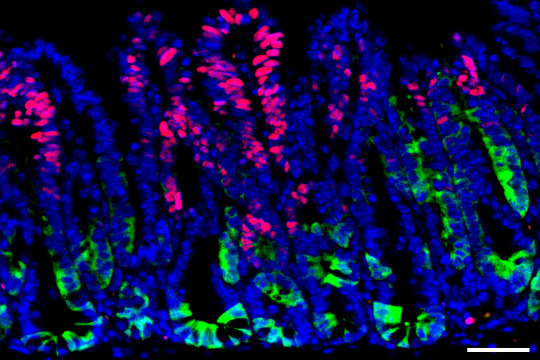

One of the immune system’s primary roles is to detect and kill cells that have acquired cancerous mutations. However, some early-stage cancer cells manage to evade this surveillance and develop into more advanced tumors.
A new study from MIT and Dana-Farber Cancer Institute has identified one strategy that helps these precancerous cells avoid immune detection. The researchers found that early in colon cancer development, cells that turn on a gene called SOX17 can become essentially invisible to the immune system.
If scientists could find a way to block SOX17 function or the pathway that it activates, this may offer a new way to treat early-stage cancers before they grow into larger tumors, the researchers say.
“Activation of the SOX17 program in the earliest innings of colorectal cancer formation is a critical step that shields precancerous cells from the immune system. If we can inhibit the SOX17 program, we might be better able to prevent colon cancer, particularly in patients that are prone to developing colon polyps,” says Omer Yilmaz, an MIT associate professor of biology, a member of MIT’s Koch Institute for Integrative Cancer Research, and one of the senior authors of the study.
Judith Agudo, a principal investigator at Dana-Farber Cancer Institute and an assistant professor at Harvard Medical School, is also a senior author of the study, which appears today in Nature. The paper’s lead author is MIT Research Scientist Norihiro Goto. Other collaborators include Tyler Jacks, a professor of biology and a member of MIT’s Koch Institute; Peter Westcott, a former Jacks lab postdoc who is now an assistant professor at Cold Spring Harbor Laboratory; and Saori Goto, an MIT postdoc in the Yilmaz lab.
Immune evasion
Colon cancer usually arises in long-lived cells called intestinal stem cells, whose job is to continually regenerate the lining of the intestines. Over their long lifetime, these cells can accumulate cancerous mutations that lead to the formation of polyps, a type of premalignant growth that can eventually become metastatic colon cancer.
To learn more about how these precancerous growths evade the immune system, the researchers used a technique they had previously developed for growing mini colon tumors in a lab dish and then implanting them into mice. In this case, the researchers engineered the tumors to express mutated versions of cancer-linked genes Kras, p53, and APC, which are often found in human colon cancers.
Once these tumors were implanted in mice, the researchers observed a dramatic increase in the tumors’ expression of SOX17. This gene encodes a transcription factor that is normally active only during embryonic development, when it helps to control development of the intestines and the formation of blood vessels.
The researchers’ experiments revealed that when SOX17 is turned on in cancer cells, it helps the cells to create an immunosuppressive environment. Among its effects, SOX17 prevents cells from synthesizing the receptor that normally detects interferon gamma, a molecule that is one of the immune system’s primary weapons against cancer cells.
Without those interferon gamma receptors, cancerous and precancerous cells can simply ignore messages from the immune system, which would normally direct them to undergo programmed cell death.
“One of SOX17’s main roles is to turn off the interferon gamma signaling pathway in colorectal cancer cells and in precancerous adenoma cells. By turning off interferon gamma receptor signaling in the tumor cells, the tumor cells become hidden from T cells and can grow in the presence of an immune system,” Yilmaz says.
Without interferon gamma signaling, cancer cells also minimize their production of molecules called MHC proteins, which are responsible for displaying cancerous antigens to the immune system. The cells’ insensitivity to interferon gamma also prevents them from producing immune molecules called chemokines, which normally recruit T cells that would help destroy the cancerous cells.
Targeting SOX17
When the researchers generated colon tumor organoids with SOX17 knocked out, and implanted those into mice, the immune system was able to attack those tumors much more effectively. This suggests that preventing cancer cells from turning off SOX17 could offer a way to treat colon cancer in its earliest stages.
“Just by turning off SOX17 in fairly complex tumors, we were able to essentially obliterate the ability of these tumor cells to persist,” Goto says.
As part of their study, the researchers also analyzed gene expression data from patients with colon cancer and found that SOX17 tended to be highly expressed in early-stage colon cancers but dropped off as the tumors became more invasive and metastatic.
“We think this makes a lot of sense because as colorectal cancers become more invasive and metastatic, there are other mechanisms that create an immunosuppressive environment,” Yilmaz says. “As the colon cancer becomes more aggressive and activates these other mechanisms, then there’s less importance for SOX17.”
Transcription factors such as SOX17 are considered difficult to target using drugs, in part because of their disorganized structure, so the researchers now plan to identify other proteins that SOX17 interacts with, in hopes that it might be easier to block some of those interactions.
The researchers also plan to investigate what triggers SOX17 to turn on in precancerous cells.
The research was funded by the MIT Stem Cell Initiative via Fondation MIT, the National Institutes of Health/National Cancer Institute, and a Koch Institute-Dana Farber Harvard Cancer Center Bridge Project grant.
1 note
·
View note